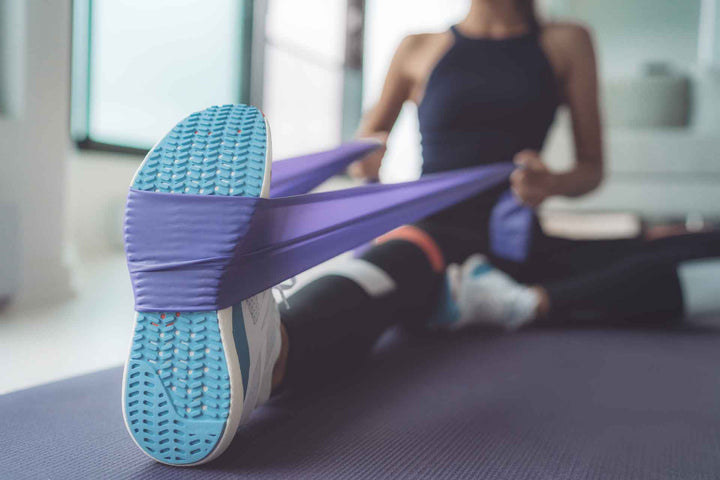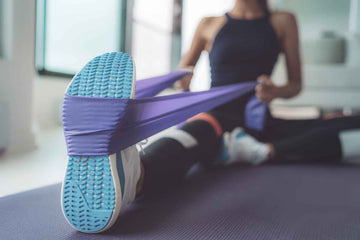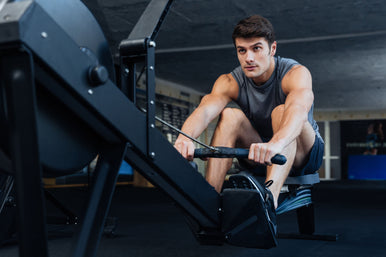

Resistance bands are such a cheap and easy tool, but often we don’t appreciate just how valuable they can be for our health and fitness goals.
Resistance bands are so adaptable, they can be utilised anywhere, and in many different ways, to help you get the most out of your workouts.
Here we explore exactly how you can utilise resistance bands in your everyday life, whatever your fitness goals.
What are resistance bands?
Resistance bands are pieces of flat stretchy rubber, which come in different widths. It is the width of the resistance band which determines how hard it is to use; with the wider bands having more resistance and therefore being more challenging to stretch.
You will probably see resistance bands in most gyms, and lot of personal trainers use them to help their clients achieve their desired effects. Resistance bands are also commonly used by physio’s as they can be a great rehab tool too.
What are resistance bands good for?
You can use your resistance bands in a number of ways, depending on your goals. Here are some of the key uses:
- To build strength by using the bands to increase the muscular effort required to complete both lower and upper body strength exercises
- You can use the straps to elevate the difficulty in weightlifting, either via bars or dumbbells.
- If you have an injury you can rehab via resistance bands- especially when working on supporting joint mobility as well the strengthening muscles around the hip and knees
- For assisted pull ups- by attaching the bands around the bar and placing your foot inside you can work up to a full pull up in a graded manner
How the resistance bands help?
- They keep your workouts fresh; our bodies, much like our minds, can grow tired of the same repetitive movement patterns. By adding resistance bands into the mix, you can stimulate new muscle activity and you force your body to adapt to the resistance- with adaption comes growth, so resistance bands can really help you to meet your goals.
- They recruit your stabilising muscles; by making you a little unsteady resistance bands wake up the muscles which work to stabilise your joints. Your body must work harder to maintain stability, and this also calls upon your core strength, as an added bonus.
- Function over form- whilst we do many exercises for ascetic reasons, its important we maintain the ability to conduct ‘functional movements’ as well, as this will keep us active, for longer. By using bands in exercises such as crab walks, squats, and monster steps, we can promote the range of movement required for good functionality.
- You can get a full body work out- by utilising a number of muscles all at once, resistance bands used for compound exercises can promote a synchronised full body involvement, supporting you from head to toe.
- Travel light- you can fit these bands into even the smallest of bags meaning you don’t need to sacrifice your workout goals on the road. They can help you to replicate some of the exercises you do at the gym, to ensure your muscles don’t switch off even when you do.
- They create better body awareness- the act of focusing your attention on the contraction of each muscle helps you to tune into your body and make sure you are activating and isolating the intended parts. The bands help to give you ‘feedback’ as to whether or not you are on target with your movements- making it that much easier to gauge your success.
How to get started
- Check the colour of your band- usually resistance bands are colour coded for ease of use. This means that you will find bands ranging from light to medium, heavy, and very heavy, so do check your band to ensure the level is right for you.
- Try a simple series of exercises using the band to see if it is the right resistance level- if you feel as if your muscles want to ‘snap back’ too quickly then the resistance is likely too high
- Decide on your goals- are you looking to rehab, build strength or increase mobility as this will influence the type of movements you choose
- Take care if you are attaching your bands to any objects- you want to have a secure hold before you put your body weight into the band.
Key takeaways:
- Resistance bands are often overlooked but a highly valuable asset to your workouts
- You can build strength, mobility, or rehab using your bands
- Resistance bands enhance muscle contraction, promote use of stabilising muscles, and require adaption from your body- all which improve your physical capacity.
- Find the right resistancy for you, and gently ease into any exercises.


